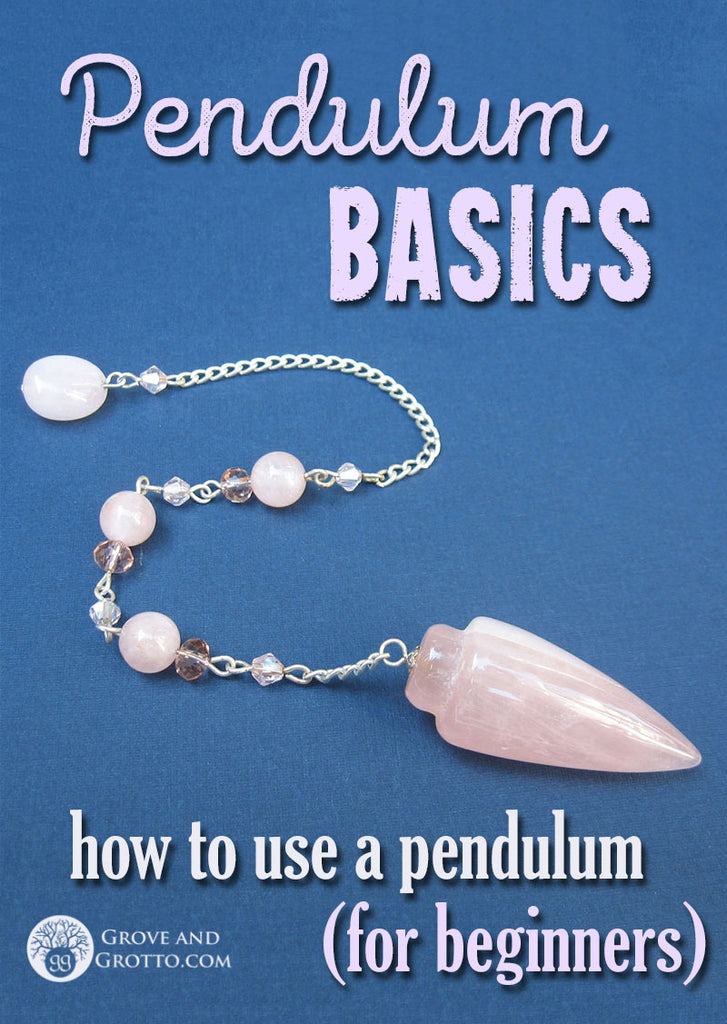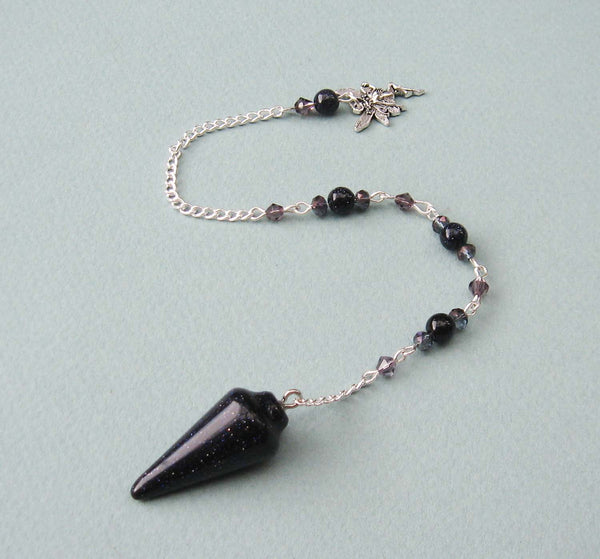Pendulum basics: How to use a pendulum for beginners
Posted by Michelle Gruben on

A pendulum is a powerful tool for accessing intuition. Pendulums and dowsing have been used by humans for thousands of years, and it would be difficult to name a magical tool that is more compact and versatile. Pendulums, which work from involuntary muscle movements, allow you to bypass your conscious mind and go directly to the unconscious or Higher Self, the source of boundless knowledge.
Many people use pendulums to answer “yes” or “no” questions. Begin by holding the pendulum by its chain or cord in your non-dominant hand (your left, if you are right-handed). Let the pendulum bead (the business end) dangle over a tabletop or your lap.
The first thing you’ll probably notice is that it’s very difficult to hold a pendulum completely still. The pendulum will seem to want to move on its own, swinging in circles and lines. It might seem kind of spooky at first, but it’s only the pendulum’s response to tiny, involuntary muscle movements in your hand and arm.
The key to using a pendulum for divination is to learn what these movements mean for you. You’ll need to “program” your pendulum to get accurate answers to your questions. Begin by asking “show me a ‘yes,’” and “show me a ‘no,’” and observe the pendulum’s movements. Perhaps “yes” is a clockwise motion and “no” is counterclockwise. Or “yes” could be front to back movement, and “no” is side to side. Your pendulum may have a way of showing you that the answer is “maybe,” or that the question is unclear. There are no rules to this. It will work as long as you’re consistent.
Once you learn the basics of using your pendulum, there are almost no limits to its magickal applications. Pendulums are excellent for sensing energy and communicating with guides and spirits. You can use it over map and books to identify important areas. Try using it to find lost objects, scan the body for energy imbalances, detect changes in moods during conversations, and much more. Have fun!
See more articles here.
Share this post
- Tags: 2015, beginner, divination, pendulums, psychic development

